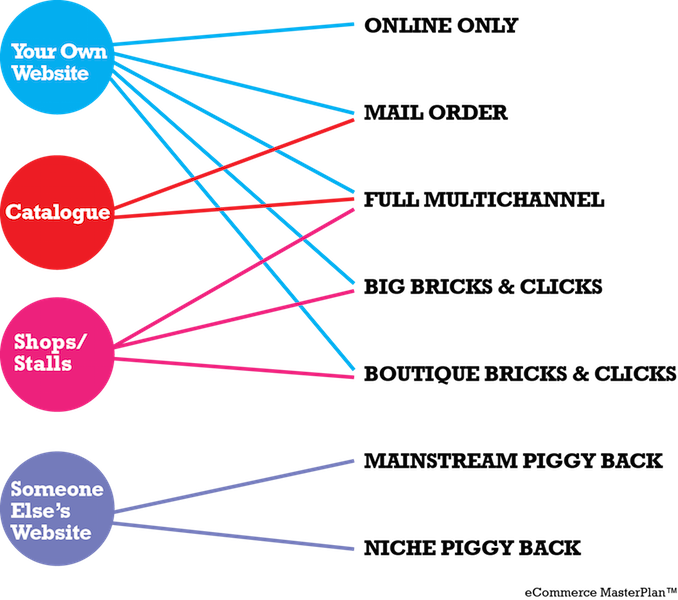Identifying Your e-Commerce Business Structure
Episode #2 of the course eCommerce fundamentals by Chloë Thomas
Welcome to the second lesson of this course.
Having introduced the model yesterday, it’s now time to dive into some of the detail and start working on your eCommerce business.
Not all eCommerce businesses are the same, and not all successful eCommerce businesses are the same. However, all the successful ones do fit into similar molds. By consciously building your business based on one of these structures, you will build a better business faster.
The structures are defined by the four ways customers can browse, learn about, and purchase your products:
• Your website
• A paper catalogue
• Your physical stores
• Via someone else’s website
These four routes to market combine to make seven key eCommerce business structures.
If your eCommerce business is to be really successful, you need to embrace your eCommerce Business Structure and stick to it. Migrating between them is a LOT of work.
Here they are:
1. Online Only. A business where the only route to purchase is online is the most straightforward of our structures.
2. Mail Order. There is a transactional website plus a printed catalogue.
3. Full Multichannel. Multichannel is a business that has a catalogue, a website, and stores. This is by far the most difficult to succeed at, because each of the three channels has very different demands.
4. Bricks and Clicks. Bricks and Clicks is any business that has physical stores as well as its eCommerce website, but has no mailing catalogue. This also includes traveling stores if you’re a market trader or attend many shows and craft fairs each year.
There is a lot of diversity among this group, so we’ve split them into two sections. When a business goes past two or three shops, the systems and structures for the business fundamentally change.
a. Big Bricks and Clicks. Big Bricks and Clicks are companies with chains of stores (three or more stores).
b. Boutique Bricks and Clicks. Boutique Bricks and Clicks are companies with one or two physical locations.
5. PiggyBacking. PiggyBacking is the use of someone else’s retail infrastructure to get your products to market.
There are two types of PiggyBacking:
a. Mainstream PiggyBacking. This is using sites like Amazon and eBay, where you are tapping into their huge infrastructure and customer base.
b. Niche PiggyBacking. Niche PiggyBacking is where sellers of similar products come together to market more easily. Examples include the craft world (Etsy, Folksy), hotels (Hotels.com, LateRooms.com), jewelry (Boticca), and books (AbeBooks.co.uk).
Which is best for your business?
Tomorrow we’ll move on to look at the Product Range Scale—how your product range affects your strategy.
Catch up tomorrow,
Chloë
Recommended book
Share with friends


